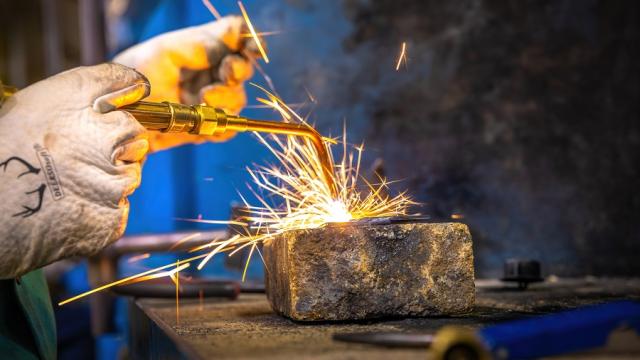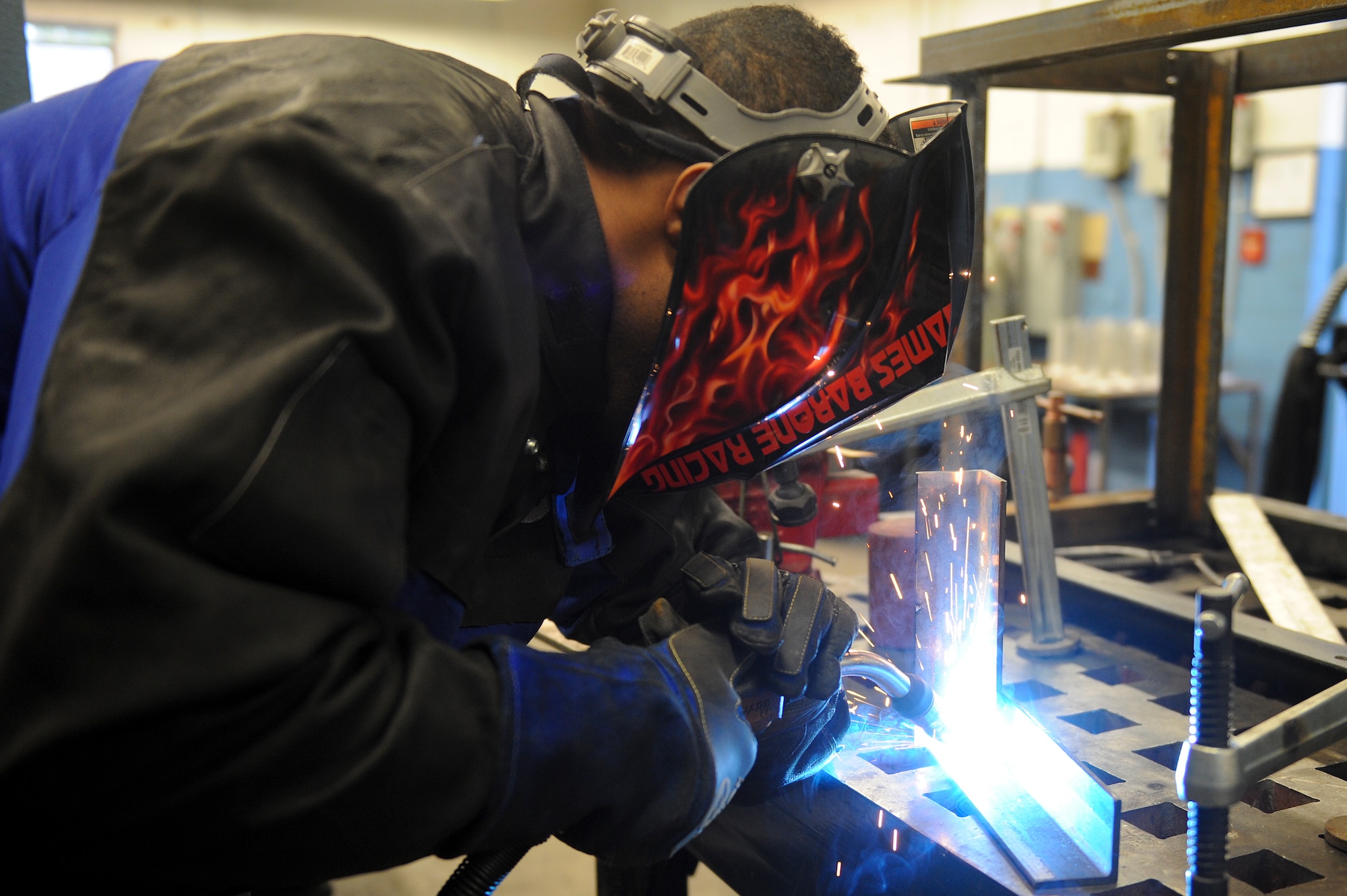All Concerning Welding: Trick Insights Into Techniques and Finest Practices for Success
Welding encompasses a range of strategies, each matched for details products and applications. Understanding these techniques, such as GMAW, SMAW, and TIG, is important for attaining optimal results. Additionally, the appropriate equipment and security techniques can not be overlooked. As preparation and fixing play critical duties in the welding procedure, understanding these aspects can considerably enhance the quality of the final product. What are the key factors that ensure a successful weld?
Understanding Different Welding Methods
Welding techniques include a selection of techniques, each matched to details applications and products. Amongst the most common techniques are Gas Metal Arc Welding (GMAW), Protected Steel Arc Welding (SMAW), and Tungsten Inert Gas Welding (TIG) GMAW, also called MIG welding, is prominent for its rate and versatility, making it ideal for slim materials. SMAW, or stick welding, is preferred for its simplicity and performance in outdoor atmospheres, specifically with thicker steels. TIG welding provides precision and control, making it appropriate for intricate work and non-ferrous steels (Montana Mobile Welding and Repair). Each strategy has its distinct advantages and factors to consider, enabling welders to choose the best method based on the project's requirements, product kind, and preferred results. Understanding these techniques is necessary for effective welding
Essential Welding Equipment and Tools
While different welding techniques require particular abilities, the best devices and devices are equally important for achieving top quality results. Essential welding devices includes welding machines, which differ depending on the method-- such as MIG, TIG, or stick welding. Safety equipment, consisting of safety helmets, gloves, and aprons, warranties security and comfort during the process. In enhancement, clamps and components aid protect products in position, making certain precision in welds. Consumables like welding poles, wire, and securing gas are also crucial parts that influence the high quality of the weld. Devices such as cutters and mills facilitate surface area prep work and post-weld completing, contributing to a professional result. Purchasing top quality devices ultimately enhances the efficiency and effectiveness of welding jobs.
Security Practices in Welding
Appropriate safety and security practices are crucial in the welding sector to protect employees from potential risks. Welders have to wear suitable personal safety equipment (PPE), consisting of safety helmets with proper shading, gloves, and flame-resistant clothing. Appropriate ventilation is crucial to decrease exposure to hazardous fumes and gases generated throughout the welding process. Additionally, workers ought to be learnt the correct handling of welding equipment to stop accidents. Fire safety actions, such as maintaining flammable products far from the welding area and having fire extinguishers conveniently offered, are necessary. Routine inspections of devices and work areas can aid determine possible threats before they bring about mishaps. By adhering to these safety and security practices, welders can create a much safer working setting and decrease dangers associated with their profession.
Preparing Materials for Welding
Preparing materials for welding is an essential step that substantially affects the high quality and stability of the last item (Montana Mobile Welding and Repair Belgrade Welding). Appropriate preparation entails cleansing the surface areas to remove pollutants such as dust, oil, and rust, which can endanger the weld. Methods such as grinding, sanding, or using solvents are frequently used to attain a clean surface area. Additionally, guaranteeing that the materials fit together comfortably is crucial; spaces can result in weak welds. It's also crucial to consider the positioning and positioning of the components, as this will affect the simplicity of welding and the final outcome. Choosing the ideal filler product and making certain compatibility with the base steels is essential for achieving solid, long lasting welds.
Tips for Achieving High-Quality Welds
Accomplishing high-quality welds needs attention to information and adherence to finest methods throughout the welding procedure. Proper joint prep work is necessary, ensuring surfaces are clean and complimentary from pollutants. Choosing the suitable filler material and welding strategy based on the base metals is vital for ideal bonding. Keeping consistent traveling rate and angle while welding can avoid issues and advertise harmony. Additionally, controlling warm input is necessary; excessive warm can cause warping and weakened joints. If necessary, frequently evaluating the welds during the procedure allows for instant adjustments. Ultimately, using proper post-weld treatments, such as cleansing and stress and anxiety alleviation, can enhance the sturdiness and integrity of the weld, ultimately making welding table for sale sure an effective result.
Fixing Usual Welding Issues
Welding commonly presents challenges that can impact the top quality and stability of the end product. Typical issues such as porosity, inconsistent weld beads, and overheating can emerge, each requiring certain troubleshooting techniques. Understanding these problems is essential for welders to boost their abilities and achieve ideal results.
Porosity Troubles Described
Porosity can commonly be ignored, it continues to be a crucial issue in welding that can compromise the honesty of a finished item. Porosity refers to the existence of little gas pockets within the weld bead, which can lead and compromise the joint to early failing. This trouble usually emerges from contaminants, dampness, or improper shielding gas coverage during the welding process. To minimize porosity, welders must confirm that the base materials are clean and completely dry, make use of ideal securing gases, and preserve constant welding specifications. Regularly evaluating the tools and setting can additionally assist determine potential issues before they show up in the weld. Resolving porosity efficiently is important for accomplishing solid, durable welds that satisfy top quality standards.

Irregular Weld Beads
Irregular weld grains can substantially affect the top quality and toughness of a finished item. Numerous aspects add to this concern, including incorrect traveling rate, incorrect amperage setups, and irregular electrode angles. When the welder relocates as well swiftly, a bead may show up narrow and lack aws d1 5 penetration, while moving as well slowly can cause too much buildup. Additionally, utilizing the incorrect amperage can result in either undercutting or excessive spatter, both of which compromise weld stability. The welder's technique, such as inconsistent lantern motion, can additionally lead to unequal bead look. To minimize these problems, welders need to concentrate on maintaining stable, controlled movements and ensuring appropriate equipment setups to attain harmony in their welds. Consistency is key to accomplishing reliable and strong welds.
Getting Too Hot and Warping Issues
Extreme heat during the welding procedure can result in substantial getting too hot and deforming issues, impacting the architectural stability of the work surface. These problems usually materialize as distortion, which can endanger placement and fit-up, making more setting up testing. Aspects contributing to overheating include the selection of welding criteria, such as voltage and travel rate, as well as the kind of product being bonded. To reduce these issues, welders ought to maintain consistent travel speed and ideal warm input while monitoring the workpiece temperature. Furthermore, preheating or post-weld heat therapy can aid relieve stresses triggered by quick cooling - Montana Mobile Welding and Repair. Routine assessment and adherence to ideal practices are essential in stopping getting too hot and guaranteeing the longevity and reliability of welded structures
Frequently Asked Concerns
What Are the Profession Opportunities in the Welding Sector?
The welding market offers diverse occupation chances, consisting of placements as welders, teachers, examiners, and designers. Professionals can work in manufacturing, building and construction, aerospace, and automobile industries, taking advantage of solid demand and competitive wages in numerous roles.
How Can I Enhance My Welding Rate Without Sacrificing High Quality?
To boost welding speed without sacrificing quality, one should practice effective strategies, maintain tools, optimize settings, and boost hand-eye control. Routine training and looking for comments can likewise substantially contribute to achieving much faster, high-quality welds.
What Qualifications Are Offered for Welders?
Numerous certifications exist for welders, including those from the American Welding Society (AWS), the National Center for Building Education And Learning and Research (NCCER), and different industry-specific companies. These qualifications boost find more employability and show ability efficiency.
Just How Does Welding Influence the Qualities of Metals?
Welding affects the residential properties of steels by changing their microstructure, which can cause modifications in stamina, hardness, and ductility. Warmth input and air conditioning prices throughout the procedure substantially influence these product features.
Can I Weld Dissimilar Metals Together?
